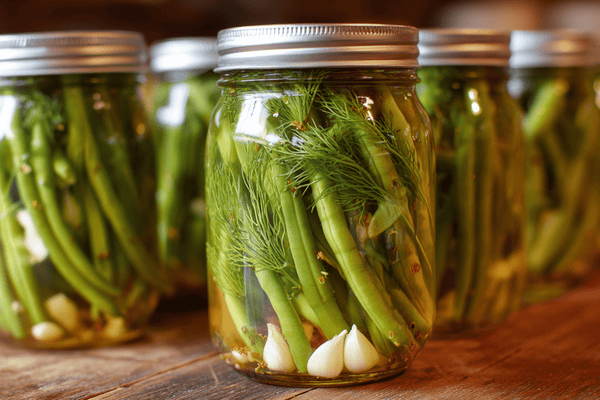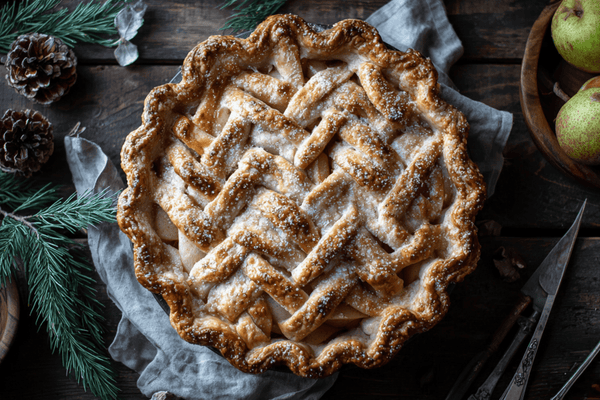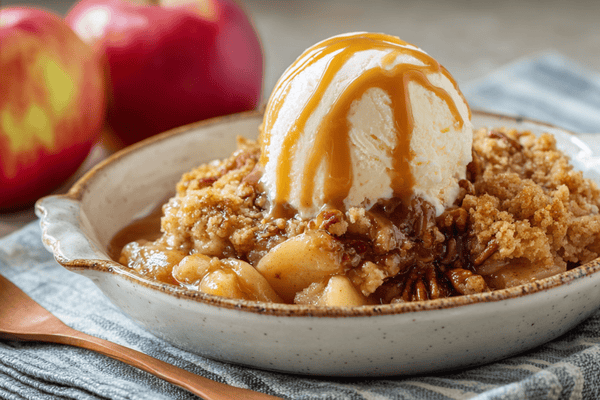 We all use kitchen knives for preparing food but have you ever noticed that your knife begins to not perform as well? This is likely because it is going dull and this is a common issue.
We all use kitchen knives for preparing food but have you ever noticed that your knife begins to not perform as well? This is likely because it is going dull and this is a common issue.There could be some things you are doing that cause the knife to dull more quickly than it should. In this guide, we’ll discuss some of the most common mistakes that cause a knife blade to dull prematurely.
However, you should also keep in mind that all knives will dull over time and this is something that you cannot avoid. But taking good care of your knives and sharpening them correctly will ensure that they stay as sharp as possible for as long as possible. It’s also worth noting that certain knives, such as single bevel Japanese knives, are sharper by design than something like a western chef’s knife. As such, they’ll retain their edge for longer.
Table of contents
- How Long Should a Knife Stay Sharp?
- Types of Knives That Stay Sharper For Longer
- How Do I Knife If My Kitchen Knife Is Dull?
- The Blade Feels Dull
- Do The Paper Test
- Do The Tomato Test
- Do The Onion Test
- Top Reasons That a Knife Dulls Too Quickly
- Scraping the Knife Across the Cutting Board
- Using the Wrong Cutting Surface
- Using the Knife for the Wrong Applications
- Not Cleaning the Knives Correctly
- Not Storing the Knives Correctly
- Why Isn't My Knife Getting Sharp?
- Final Thoughts
How Long Should a Knife Stay Sharp?
How long a knife stays sharp will depend on a number of factors. These include the type of material the knife is made from, how often it is used and how well you take care of it.It’s important to remember that honing and sharpening are not the same thing. While you might need to use a honing steel on your blade around every four uses, this removes burrs and maintains an already sharp edge. Both of which will help to keep your knives sharper for longer.
But as we mentioned, the type of material the knife is made from will make a huge difference in how long it stays sharp. For example, if you’re using a carbon steel knife then an expert might recommend you sharpen it after every use. It might seem excessive but carbon steel knives are incredibly sharp and precise and you’ll want to keep them that way.
However, ceramic knives are known to last much longer between sharpenings. Depending on the quality, these blades might stay sharper for up to ten times as long as a carbon steel blade. Of course, how well you care for the knife will impact this and it’s a good idea to remember that a ceramic blade isn’t as versatile. As such if you use it for the wrong purpose, you’ll likely end up damaging it and causing it to become a dull knife.
It’s also worth pointing out that it is possible to sharpen a knife's edge too much. While a lot of people might think that you can’t have too much of a good thing, this isn’t the case where knives are concerned. The more you sharpen the blade, the more material you wear away and this will impact the overall lifespan of the knife.
That said, we would always recommend sharpening a knife before it gets too dull. If you leave it too long then you’re only creating more work for yourself. Keep an eye on the performance of your blades and sharpen them as soon as you notice that they aren’t working as well as they should.
Types of Knives That Stay Sharper For Longer
As we have seen, certain knives will remain sharper than others for much longer. If you don’t want the hassle of constantly needing to sharpen dull knives then it’s wise to think about the following options.Stainless steel is an incredibly common metal used for knife blades and the great thing about this material is that it is really durable. What’s more, there’s less chance of these knives rusting or staining so you’ll have sharp knives for a lot longer than normal. When it comes to sharpening a stainless steel knife, the process is a lot easier so, even if you’re a beginner, you shouldn’t have too much trouble. The issue with stainless steel knives, however, is that they will dull more quickly than other options.
Carbon steel is a great material if you’re serious about getting a high-quality, professional-style knife. High carbon blades are excellent at retaining their sharpness over time and in addition to making them perform better, this sharpness also makes them safer to use.

Ceramic knives are the best choice if you’re looking for something sharp that isn’t going to break the bank. However, ceramic knives do have a tendency to chip or scratch more than others so they may need honing more frequently. However, they’re stunning to look at and are very precise if you want something for slicing and dicing.
How Do I Know If My Kitchen Knife Is Dull?
Before we start looking at the reasons that your knife may have become dull, it’s important to understand exactly what a dull blade feels and looks like. If you’re not a knife expert, you may simply get used to the dullness that develops over time and even overlook it. If that’s the case, don’t worry, you’re not alone. However looking out for the following signs will help you to determine when your knife needs to be sharpened.
The Blade Feels Dull
When you first buy your knife, it’s a really good idea to familiarise yourself with how it feels. This includes when you use it and when you touch it. Now, before you get carried away, when we say touch it, we are NOT telling you to put yourself at risk of injury. It is possible to very gently run your fingertip over the edge of the knife to feel whether it is sharp without breaking the skin.You’ll notice that the edge feels well defined and distinct but if it is dull, it’ll feel rounded. You should also pay attention to how the blade feels when you are cutting. If it glides effortlessly through the food then this tells you that it is sharp. However, if there is more friction and it’s more of an effort, this might be a sign that the blade requires sharpening. We’ll look at how dull blades perform with certain foods a little later on.
Do the Paper Test
 If you don’t feel comfortable touching the knife edge then you could perform the paper test. This will tell you how the the knife is quickly and safely.
If you don’t feel comfortable touching the knife edge then you could perform the paper test. This will tell you how the the knife is quickly and safely.You’ll need a normal piece of paper which you will hold upright in front of you. Take your knife and place it at the top of the paper, running it down to slice through. If it goes through easily, this means the knife is sharp. If it won’t create a clean, smooth cut then it’s probably time to give your knife blade some TLC.
Do the Tomato Test
 How your knife works with food will tell you a lot about its current condition. When cutting something delicate like a tomato, a sharp knife will glide through smoothly without the need for a lot of force on your part.
How your knife works with food will tell you a lot about its current condition. When cutting something delicate like a tomato, a sharp knife will glide through smoothly without the need for a lot of force on your part.However, if you have to push the blade down, if the knife slips, or if it catches the skin and squashes the fruit then this is a sign that the blade has a dull edge.
Do the Onion Test
 If you’ve done the tomato test and still aren’t 100% sure about the quality of your knife blade, you can use an onion to test it further.
If you’ve done the tomato test and still aren’t 100% sure about the quality of your knife blade, you can use an onion to test it further.Do this by taking a peeled onion and cutting through it with the knife you’re testing. If it is sharp then it’ll cut right through the onion without a fuss. But if you find that the blade is slipping off the skin, this is a clear sign that it’s time to sharpen.
Top Reasons That a Knife Dulls Too Quickly
Even the most seasoned, professional chefs have been guilty of mistreating their knives at one point or another. If they tell you they haven’t, then they’re properly fibbing.If you want your kitchen knives to perform as well as possible then you’ll need to take good care of them. This includes using them in the right way as this can drastically impact how quickly, or slowly, they dull.
Here are some of the top reasons that your kitchen knife might have gotten dull before your expected it to.
Scraping the Knife Across the Cutting Board
We have all done this; dragged the blade edge over the cutting board to move food from one place to another. Do this with the spine of the blade and you won’t have a problem, but if you do it with the sharpened cutting edge, you’re going to dull the blade much more quickly.
When you do this, you are messing up the alignment of the knife edge and this will make it more difficult to cut and slice. For the absolute best results, you’ll want to use a bench scraper which eliminates the need to use any part of your knife for moving food around.
Using the Wrong Cutting Surface
Buying a good cutting board is just as important as buying the right knife. If you cut ingredients on a hard surface like stone or glass, this is going to impact your knife dramatically. The blade edge will wear down much faster and you’ll have to keep sharpening it.
However, using a wooden chopping board is much gentler on your knife and will reduce the need to sharpen as much. A plastic cutting board is better for your knives, but there’s really nothing as good as wood.

Using the Knife For the Wrong Applications
Different knives are made with different purposes in mind and it’s essential that you use them for what they are intended. If you don’t, this will shorten their lifespan and make them go dull more quickly.
A chef’s knife is potentially one of the most versatile tools in your kitchen. However, they’re not perfect for everything. If you try to cut something hard like bone with a chef’s knife, it’ll work but it will also dull the edge a lot faster. Instead, you should opt for a boning knife in this instance.
Moreover, a lot of people are guilty of using their knives for things other than preparing food. Have you ever taken your chef knife out to open a cardboard box? Or used your paring knife in place of a screwdriver? If you have then this will ruin the edge as these blades simply aren’t designed to cope with these tasks.
If you want your knives to last as long as possible between sharpenings, you will need to treat them properly and only used them as they’re meant to be used.
Not Cleaning the Knives Correctly
In the modern kitchen, it’s super easy to just throw everything in the dishwasher for cleaning. Yes, it might be convenient but it isn’t going to do your knives any favours. The dishwasher is a harsh environment for a delicate Japanese kitchen knife.
Water pressure, other items bashing against the blade and hight temperatures can all affect the quality of the blade. If you clean your knife in the dishwasher, it isn’t going to stay sharp for as long.
Instead, you should always hand wash your knives in warm water and gentle soap, if necessary. Where possible, simply wiping the knife over with a wet cloth will remove food and won’t risk damaging the blade. Of course, if you’ve been cutting something like raw meat then this cleaning method won’t be suitable for removing bacteria.
When you have finished washing your knives, it is imperative that you dry them immediately and thoroughly before storing them.
Not Storing the Knives Correctly
 Some people keep their kitchen knives in a drawer with other utensils. This seems like a good idea; they’re out of the way, after all. But keeping the knives with other utensils like this can cause the blade to dull. This is because it will rub against other items, making the edge dull.
Some people keep their kitchen knives in a drawer with other utensils. This seems like a good idea; they’re out of the way, after all. But keeping the knives with other utensils like this can cause the blade to dull. This is because it will rub against other items, making the edge dull.
If you have to keep them in a drawer then it’s vital that you use a sheath to protect the blade. Moreover, this will protect your hands when reaching into the drawer.
But it’s usually best to use something like a magnetic knife rack as this won’t affect the blade at all. A knife block is a suitable option but as you put the knives in and pull them back out, this could wear down the edge more quickly.
Why Isn't My Knife Getting Sharp?
When it comes to sharpening your knife, there may be a learning curve involved, depending on the method you are using. If you’ve opted for an electric knife sharpener then this is pretty foolproof but for the best results, you’ll want to use a whetstone and this takes some practice.But even after this, you might find that your knife isn’t getting as sharp as you had hoped; why is this? Well, when it comes to knife sharpening, there are three things that you need to keep in mind if you want to sharpen the knife properly.
● Sharpen the knife to the correct angle. The correct sharpening angle is the one that already exists on the knife; this will vary between knife types so it’s worth finding this out when you buy the knife. If you try to sharpen to a higher angle then you might end up with an edge that is no longer as sharp. On the other hand, if you sharpen to a lower angle, it’ll take much longer to get your desired results.
● Maintain the angle. When you sharpen your knife, you must make sure that you do not rock the edge. Find the correct angle and maintain this throughout the sharpening session. If you don’t, then this rocking motion will actually make the knife more dull instead of sharpening it.
● Choose the right grit. Whetstones come in different grits depending on what you are trying to achieve. When you use the most coarse grit at the start of your sharpening session, you’ll need to create your desired edge. Moving through the grits, you will need to keep sharpening to the edge to maintain this angle.
Final Thoughts
A sharp knife makes it much easier to slice through food and prepare meals safely and efficiently. But if you’ve noticed that your knife is getting dull more often than you’d have liked, this could be down to a number of factors.
It’s essential that you treat your blades correctly if you want them to retain their edge for longer and avoid dull kitchen knives. Never used them for anything other than their intended purpose, make sure to wash and store them correctly and always be sure to choose a knife-friendly cutting surface.


